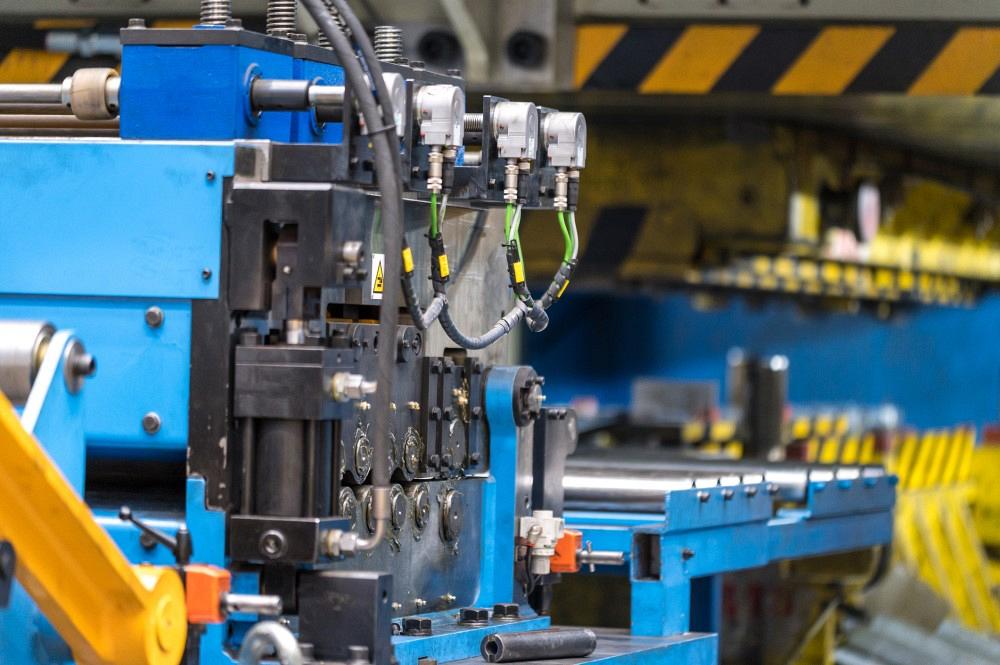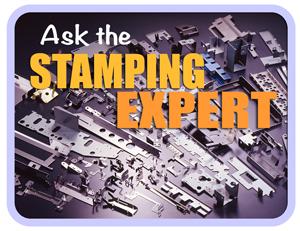- FMA
- The Fabricator
- FABTECH
- Canadian Metalworking
Categories
- Additive Manufacturing
- Aluminum Welding
- Arc Welding
- Assembly and Joining
- Automation and Robotics
- Bending and Forming
- Consumables
- Cutting and Weld Prep
- Electric Vehicles
- En Español
- Finishing
- Hydroforming
- Laser Cutting
- Laser Welding
- Machining
- Manufacturing Software
- Materials Handling
- Metals/Materials
- Oxyfuel Cutting
- Plasma Cutting
- Power Tools
- Punching and Other Holemaking
- Roll Forming
- Safety
- Sawing
- Shearing
- Shop Management
- Testing and Measuring
- Tube and Pipe Fabrication
- Tube and Pipe Production
- Waterjet Cutting
Industry Directory
Webcasts
Podcasts
FAB 40
Advertise
Subscribe
Account Login
Search
Ask the experts: What sensors should progressive dies use?
How press and feed type affect the use of three sensor types
- By Thomas Vacca
- Updated January 20, 2023
- December 3, 2020
- Article
- Bending and Forming
Q: Historically we have not used a lot of sensors in our progressive dies. Do you have any recommendations on what sensors we should use and possibly some examples on how to apply them in our stamping operation?
A: Many factors go into determining which sensor is best for a stamping application: the style of tool; box or spring stripper progressive dies; press type, speed, and stroke; and secondary applications being done concurrently in the tool during stamping, such as riveting or tapping. I could write a small book on each one. So the best way to start is to define the purpose of the sensors, the different types available, and their applications.
Note that while sensors in progressive dies are helpful, too many can lead to a disproportionate number of false readings and production stoppages. Your team can get into the habit of resetting sensors rather than recognizing when something is truly wrong, and that can cause the exact tooling damage the sensors were installed to prevent.
The Effect of Press and Feed Type on Progressive Dies
At high speed (1,000 strokes per minute [SPM] and higher), high-end presses using mechanical feeds are more robust than servo presses and feeds. The problem is that at these speeds, it’s virtually impossible to stop them in time without making another hit because of ram inertia and the resulting effective stopping distance. Even if you signal the press to stop at 10 degrees, at 1,000 SPM it will be very difficult to stop it before 180 degrees and prevent another press hit. The goal is to stop the press before you make a hit with your tooling at the bottom of the stroke, because that’s where the tooling damage occurs.
Most mechanical presses have a fixed feed cycle of 120 degrees. In other words, you can vary the timing of when you start and stop feeding but not the amount of time it takes to complete the feed cycle. With a servo feed, however, at press speeds of 300 to 500 SPM, you can change the feed cycle to finish feeding as early as possible (possibly at 0 degrees or press dead top center). Now you have a lot more time to stop the press before you make a “miss-hit” and cause tooling damage.
Progressive Die Sensor Types
Proximity sensors, the most common, are used to sense the presence or absence of a metal feature such as tooling, a punch or stripper plate, progressive strip location, or a feature on the strip. These sensors are suitable for ensuring that a tap has not broken during in-die tapping and for sensing the end of raw stock. Pass-through proximity sensors work well for part-out sensing.
Laser sensors ensure you have an unobstructed line of sight between two points. They are commonly used in single-hit tools, with the operator placing and removing parts. The laser detects if the part is lying flat and nested properly before the press can cycle. With thin parts, it also can detect if the operator has laid another part on top without removing the previous one.
Micron sensors measure a distance between two surfaces, so they are not speed-sensitive. They can be used to measure the shut height of the die every cycle of the press. If slugs pack up in the die chase or anything obstructs the tool from closing to the set point, the sensors will stop the machine. They are accurate to better than 0.00005 in.!
Micron sensors also can detect stripper plate location. The stripper is mounted on spring pins on the top side of the die shoe. As the tool closes and the stripper clamps on the top side of the raw material and then the tool continues to close to dead bottom, the spring pins compress and the stripper maintains the raw material strip clamp. If the raw material thickness changes by your set tolerance, the press will be stopped.
Presses do have tonnage monitors, which are necessary, but keep in mind that if something goes wrong to a very tight degree of accuracy and stamping force is affected by a few hundred pounds, the tonnage monitors might not pick it up.
About the Author

Thomas Vacca
Micro Co.
Has a shop floor stamping or tool and die question stumped you? If so, send your questions to kateb@thefabricator.com to be answered by Thomas Vacca, director of engineering at Micro Co.
subscribe now

The Fabricator is North America's leading magazine for the metal forming and fabricating industry. The magazine delivers the news, technical articles, and case histories that enable fabricators to do their jobs more efficiently. The Fabricator has served the industry since 1970.
start your free subscription- Stay connected from anywhere

Easily access valuable industry resources now with full access to the digital edition of The Fabricator.

Easily access valuable industry resources now with full access to the digital edition of The Welder.

Easily access valuable industry resources now with full access to the digital edition of The Tube and Pipe Journal.
- Podcasting
- Podcast:
- The Fabricator Podcast
- Published:
- 04/16/2024
- Running Time:
- 63:29
In this episode of The Fabricator Podcast, Caleb Chamberlain, co-founder and CEO of OSH Cut, discusses his company’s...
- Trending Articles
Tips for creating sheet metal tubes with perforations

Are two heads better than one in fiber laser cutting?

Supporting the metal fabricating industry through FMA

JM Steel triples capacity for solar energy projects at Pennsylvania facility

Omco Solar opens second Alabama manufacturing facility

- Industry Events
16th Annual Safety Conference
- April 30 - May 1, 2024
- Elgin,
Pipe and Tube Conference
- May 21 - 22, 2024
- Omaha, NE
World-Class Roll Forming Workshop
- June 5 - 6, 2024
- Louisville, KY
Advanced Laser Application Workshop
- June 25 - 27, 2024
- Novi, MI




























